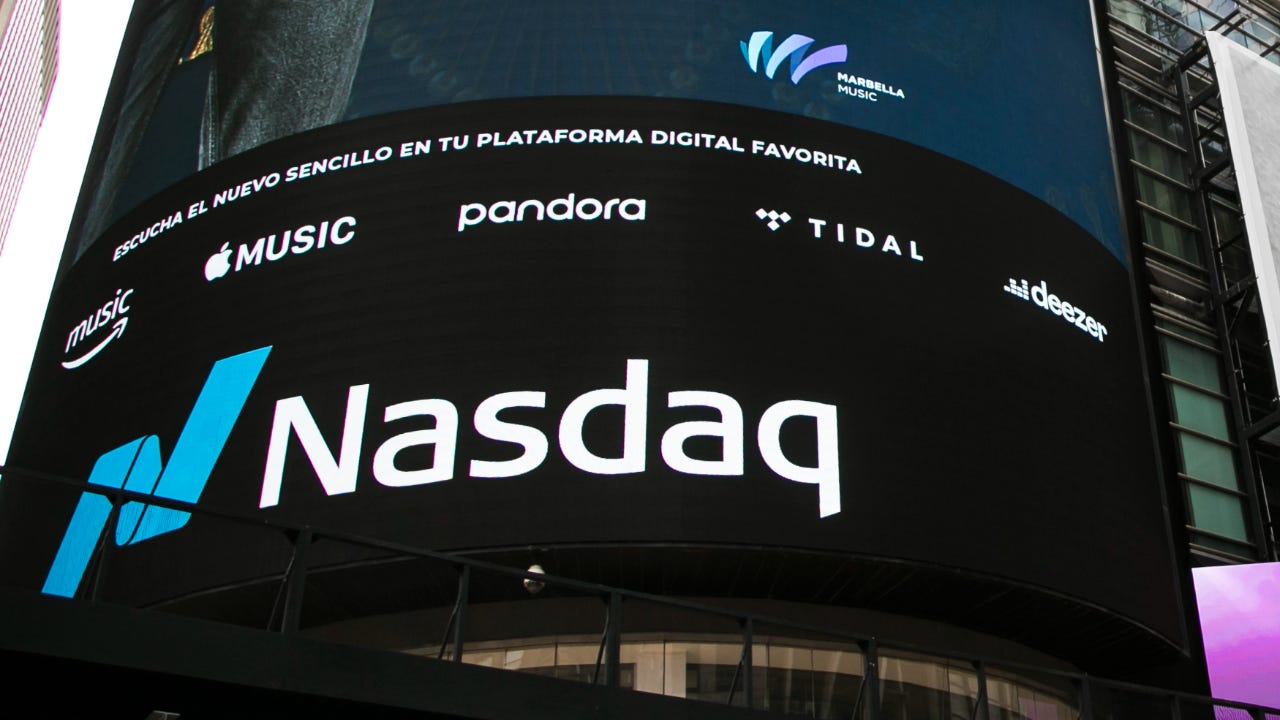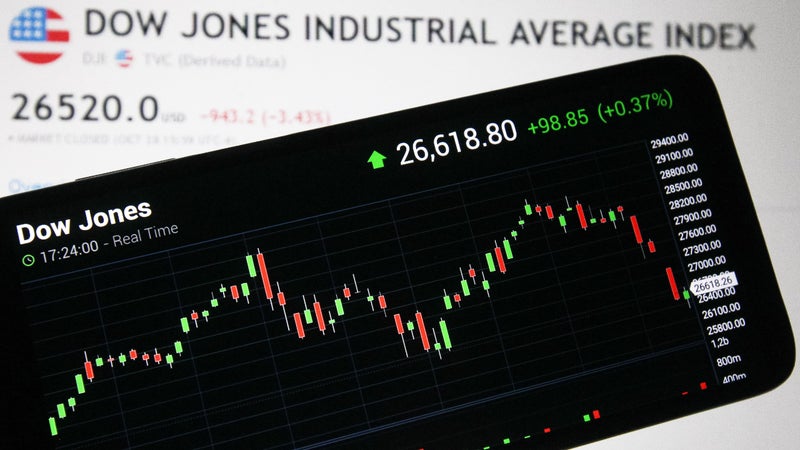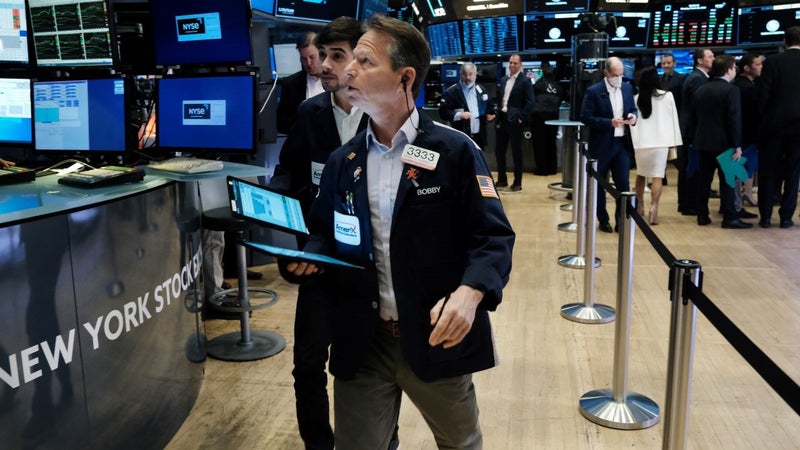What is the Nasdaq Composite?

The Bankrate promise
At Bankrate we strive to help you make smarter financial decisions. While we adhere to strict , this post may contain references to products from our partners. Here's an explanation for .
The Nasdaq Composite is an index that measures the performance of more than 3,000 securities that are all listed on the Nasdaq stock market. It is an often-cited stock market index along with the S&P 500 and the Dow Jones Industrial Average, but is known for its large number of technology-related companies.
A smaller index, the Nasdaq 100, measures the performance of the 100 largest non-financial companies listed on the Nasdaq exchange based on market capitalization. Nasdaq was originally an acronym for “National Association of Securities Dealers Automated Quotations.”
What types of companies are in the Nasdaq Composite Index?
The Nasdaq Composite is best known for its large number of technology-related components. As of December2022, about half of the index was made up of companies from the tech industry, with well-known names like Apple, Microsoft, Amazon and Google near the top of the list. There are, however, other industries included in the index such as consumer discretionary, which accounts for about 17 percent of the index, and healthcare, which makes up about 10 percent. Even some financial companies are included, such as investment management company T. Rowe Price.
Top 10 stocks that make up the Nasdaq Composite
Below are the 10 largest components of the index and their total weighting:
- Apple (AAPL): 12.19 percent
- Microsoft (MSFT): 10.54 percent
- Amazon (AMZN): 5.05 percent
- Alphabet Class C (GOOG): 3.18 percent
- Alphabet Class A (GOOGL): 3.11 percent
- Tesla (TSLA): 2.29 percent
- Nvidia (NVDA): 2.12 percent
- Meta Platforms (FB): 1.60 percent
- Pepsico (PEP): 1.47 percent
- Broadcom (AVGO): 1.34 percent
Note: Data as of December 30, 2022.
What does the Nasdaq Composite measure?
The Nasdaq Composite measures the stock performance of the constituents in the index, which all come from companies listed on the Nasdaq Stock Market. The index is market-cap weighted, which means that companies are weighted in the index based on the value of their outstanding shares. These weightings will change based on the performance of the companies’ share prices. Apple is currently the most valuable company in the world with a market capitalization around $2.5 trillion, and it accounts for roughly 12 percent of the Nasdaq Composite.
The index may also be used by investment managers as a benchmark to measure their funds’ performance against. Funds that focus on the tech industry may use the Nasdaq Composite as a way to compare their relative performance.
How to invest in the Nasdaq Composite Index
Though you can’t invest directly in the Nasdaq Composite index, you can invest in mutual funds and ETFs that aim to track the performance of the index, usually for very low costs. The Fidelity Nasdaq Composite Index ETF (ONEQ), for example, aims to track the index’s performance and comes with an expense ratio of 0.21 percent.
One of the most popular technology-related ETFs is the Invesco QQQ Trust (QQQ), which tracks the performance of the Nasdaq 100 and comes with a 0.20 percent expense ratio. These ETFs and others can easily be purchased through an online stock broker.
How does a company get included in the Nasdaq Composite?
To be included in the Nasdaq Composite Index, a company’s U.S. listing must be exclusive to the Nasdaq Stock Market, unless the security was dually listed on another U.S. exchange prior to 2004 and has continuously maintained that listing. Common stocks, ordinary shares, ADRs, shares of beneficial interest or limited partnership interests and tracking stocks are all securities that can be included in the index.
Closed-end funds, convertible debentures, exchange traded funds, preferred stocks, rights, warrants, units and other derivative securities are not eligible for inclusion in the Nasdaq Composite.
What’s the difference between the Nasdaq Composite and the S&P 500?
While both are market-cap weighted indexes, there are some key differences between the Nasdaq Composite and the widely-followed S&P 500. The Nasdaq Composite only includes companies that are listed on the Nasdaq Stock Market and has a heavy weighting toward the tech industry. The S&P 500 includes about 500 of the largest and most profitable companies in the U.S. and is a much broader index than the Nasdaq. Generally, when people refer to the stock market, they’re referring to the S&P 500.
Because the S&P 500 is a broader index than the Nasdaq Composite, it’s more likely to be used as a benchmark for fund managers trying to outperform the market.
Is the Nasdaq Composite overvalued?
The Nasdaq Composite includes a number of companies that are on the cutting edge of technology and innovation, and seem well-positioned to grow significantly over time. But this optimism about the future can occasionally cause companies in the index to appreciate beyond their intrinsic value, or what the company is worth based on its future business performance.
In the late 1990s and early 2000s, the Nasdaq found itself in a bubble driven by wild optimism for technology companies and anything tied to the budding internet. After reaching a high in March 2000, the Nasdaq tumbled nearly 80 percent to a low of 1,139.90 in October 2002 and didn’t regain its prior peak for 15 years.
Some market watchers warned that the Nasdaq was again reaching bubble territory in late 2021, with stocks such as Tesla and Nvidia appreciating enormously following the global pandemic. Time will tell whether their underlying businesses are likely to generate enough cash to justify their current valuations.
In 2022, the Nasdaq tumbled about 33 percent as investors grappled with how to value high-flying tech stocks amid interest rate hikes by the Federal Reserve.
Bottom line
The Nasdaq Composite index tracks more than 3,000 companies that are listed on the Nasdaq Stock Market and is heavily weighted toward the technology industry. Investors looking to participate in the potential growth of these companies can purchase ETFs or mutual funds that track the index.
Editorial Disclaimer: All investors are advised to conduct their own independent research into investment strategies before making an investment decision. In addition, investors are advised that past investment product performance is no guarantee of future price appreciation.


